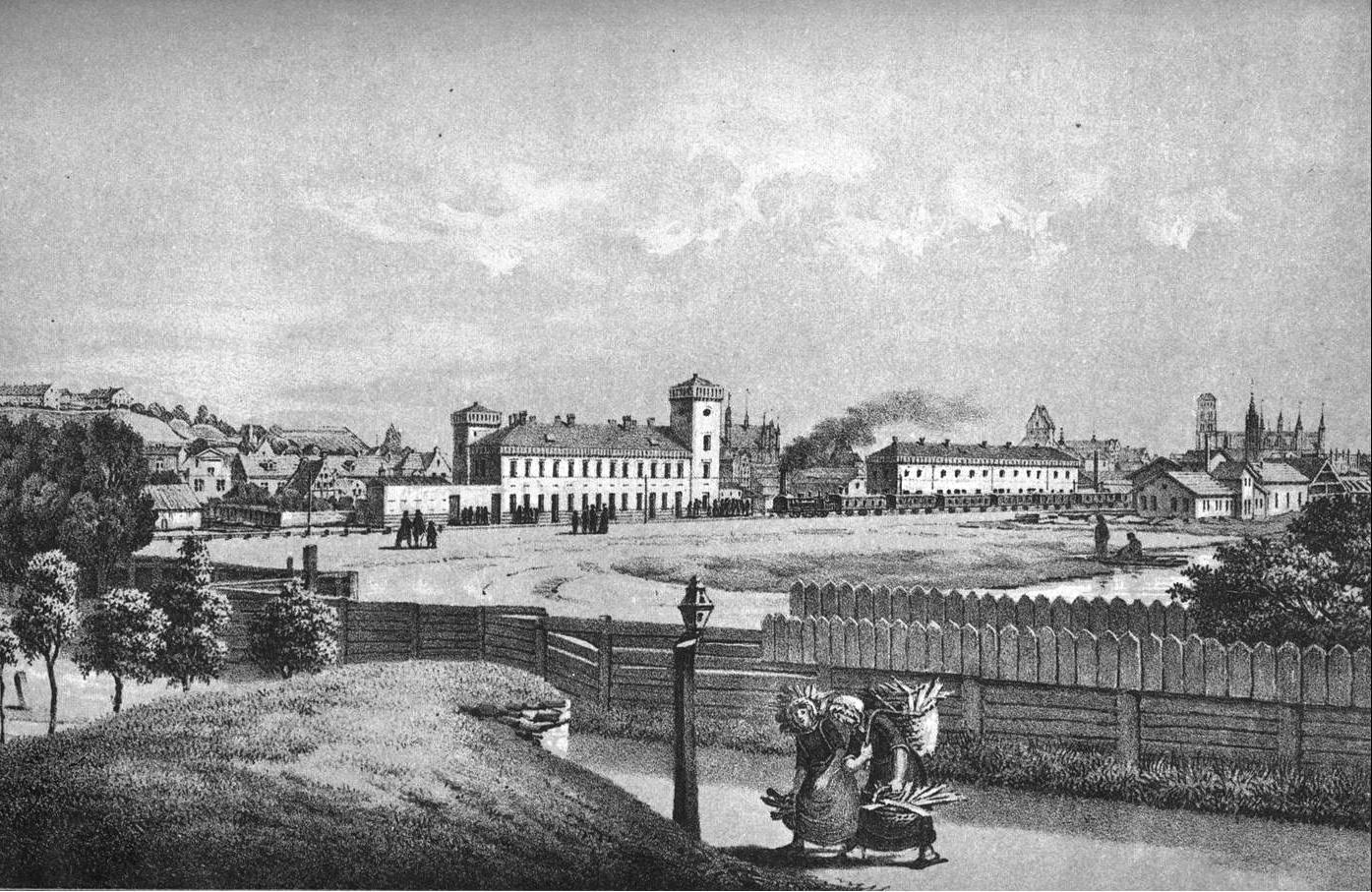History of the Güterbahnhof
Here is an edited Google translation of the history of the Danzig Güterbahnhof as given in Encyklopedia Gdańska. See the original here.
Also, enjoy these images of the old station circa 1900. At top, a view from the southern entrance to the station. Below, freight is hauled to the terminal building by horse-drawn carts.
Railway station Gdańsk Południowy
Built: 1852
Liquidated: 2015
Formerly: Guterbanhof, Danzig Leege Tor, South Gdańsk technical railway station
Location: Gdansk, Pomeranian Voivodeship, Poland.
It was the first railway station in Gdansk and originally served as a passenger station. It’s quite unhappy location was caused by fortification regulations that covered all works within the surrounding embankments. The Prussian military authorities reluctantly allowed only in the case of this station for a railway gate to be constructed. It later took on the role of a goods station after the new Danzig Hauptbahnhof (Main Gdańsk Station) was established.
Thr Nizinna gate house was initially without a name, then referred to as Danzig Leege Tor, or Lowland Gate. The nearby station at Thornscherweg 10 (Toruńska Street) had several names—the Ostbahnhof or East Station, Güterbahnhof Leege Tor, Gdańsk South and, after 1945, Gdańsk-Kłodno.
The first railway station in Gdańsk, it was built by the Prussian East Railway (Preußische Ostbahn) for servicing the branch from Tczew on the Berlin - Kostrzyn - Krzyż - Piła - Bydgoszcz - Tczew - Królewiec railway line. The location, distant from the city center, was forced by the military authorities, who allowed only to a small breach in the city fortifications near the Żubr bastion (south of Toruńska Street), creating a railway gate with shooting holes and recesses, which, if necessary, allowed for blocking the passage with iron bars. It was the final station for trains from Tczew (Dirschau).
Designed as a leading station in the neo-Gothic style, it was a two-story building with a shed. It opened August 5, 1852; the interior was rebuilt in 1871-1872. In 1886, it got a horse-drawn tram connection with the Fish village; in 1884 a siding along the Spichlerzy was led from the station; and in 1893 a siding to the Meat Works at Englischer Damm (Angielska Grobla Street) was added.
The station stopped accepting passenger trains on October 1, 1896; its function was taken over by the Central Station. From that time, he served only freight traffic. Reconstructed during World War I With offices for customs and customs clearance (Güter- und Zollabfertigungs-Gebäude). it also served temporarily as the Field Hospital of the Red Cross.
In 1945, the building of the former passenger station was destroyed. After the war, it partly rebuilt and received transports with repatriates. Then it was used for the freight expedition (PKP, PSK) and the service of private railway shipments, including foreign traffic served by customs; baggage of persons going to emigrate was processed here. The servicing of the rolling stock was secured by a small engine house. The station was closed to rail traffic in 1995, and thereafter was rented by PKP for commercial operations. Wholesale operations were housed In two warehouse buildings, In 2007, the Bursztynek hostel was built in the renovated railway expedition building.
In 2009, the area of the station property was put up for sale. In September 2014, perpetual usufruct right to 5.5 hectares was acquired for 26.15 million PLN by the developer company Invest Komfort Spółka Kapitałowa (based in Gdynia).
The dismantling of Warehouse buildings and the railway expedition building began in March 2015. Two residential buildings on the edge of the manor house were preserved.


